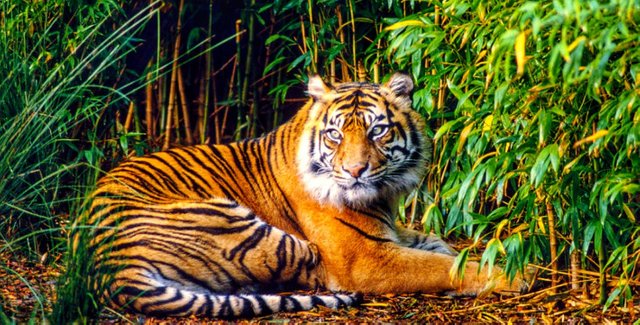Sumatran Tiger, The Predator that Helps for Sustainable Forest
Sumatran tiger (Panthera tigris sondaica) is the last remaining subspecies in Indonesia.
Hundreds of years ago there was a Bali tiger (Panthera tigris balica) and Javan tiger (Panther tigris sondaica), but both have been declared extinct. The Bali tiger was declared extinct on 27 September 1937 and the Javan tiger has been extinct since the 1980s.
There is nothing left of both due to hunting and habitat loss. The same is now targeting the Sumatran tiger. Since 2008 this species has been included in the endangered group by The International Union for Conservation of Nature (IUCN), its status is critical.
A study published in the journal Nature Communications, stated that the Sumatran tiger population has decreased dramatically. In 2000 the number of Sumatran tiger population in the wild as much as 742 tails. This figure dropped to 618 in 2012.
If according to monitoring results 2015 analysis, (population) now there are 600 of the tail. (source: Nature Communications)
He explained that the 600 Sumatran tigers were scattered throughout the forest in Sumatra. Let us forests in Indonesia become two groups, namely the wide forest and small or narrow forest. The so-called narrow forest is an area of less than 1,000 square kilometers or 100,000 hectares.
Adult tigers can roam 25,000 hectares (250 square kilometers) of forest to hunt, while the female tigers are a third. When the tiger is in a small forest, he can get out of the forest and enter the settlement of citizens.
In addition, the emergence of plantations also changed the lives of tigers. Munawar says it does not really matter tigers live on plantations, other animals like wild pigs can also live on plantations. However, the growing number of these estates makes the interaction between tigers and humans increases.
As the interaction increases, the possibilities for these rare animals are hunted and the conflict between tigers and humans increases. This is what makes the tiger status at a critical point. Hunting and trafficking are still rampant, plus there is no deterrent effect.
Sumatran Tiger Life
Female Sumatran tiger will give birth to three to five children in every three years. Unfortunately from three to five baby tigers, which can survive to adulthood on average only one tiger. At the time of pregnancy, the mother tiger will alienate from her group.
Sumatran tigress when pregnant she will go to another forest so that her children after birth safe from tiger of other stud. He will take care of his children until he feels quite independent.
This is the behavior of a female tiger. When a female tiger gives birth, usually a male tiger will kill a newborn tiger. Perhaps this is done so that the tigress lust and want to marry again. Therefore (to take care of her children), the tigress chooses to go to another forest.
Before the tigress is pregnant, the male tiger should approach the tigress for three to nine weeks. In this period of time, the male tiger and his partner will continue together until the tigress is pregnant.
Tiger's pregnancy period is about 95 to 110 days. Well, when the baby tiger was born their eyes closed and new opening at the age of approximately two weeks. In times of exile, the new tiger mothers will teach their children to hunt in the wild when they are five to six months old.
The parent will actually release the child when they feel capable of hunting alone, approximately until the age of 1.5 to 2 years. One of the highlights of this animal according to Munawar is that they have a unique communication tool.
Not only through roaring sounds and tails that can convey a variety of emotions, the tiger also communicates through its aroma. The tiger is able to smell the flock. According Munawar this is produced from the glands that come out along with urine.
It can also be used to track where the tiger is, the aroma smells.
Tiger Keeper Forest Ecosystem
By saving tigers, we are actually helping to save ecosystems and large forest habitats.
As the top predator in the food chain in its habitat, if the tiger population continues to deteriorate, the stability of the food chain will be disrupted and cause various ecosystem changes.
If the tiger is safe from extinction then the condition of the forest will be maintained and balanced. Tigers help maintain the health of ecological systems. Do not forget that the forest also has a function as a catchment of water and lungs of the world that is needed by humans.
Reference source
